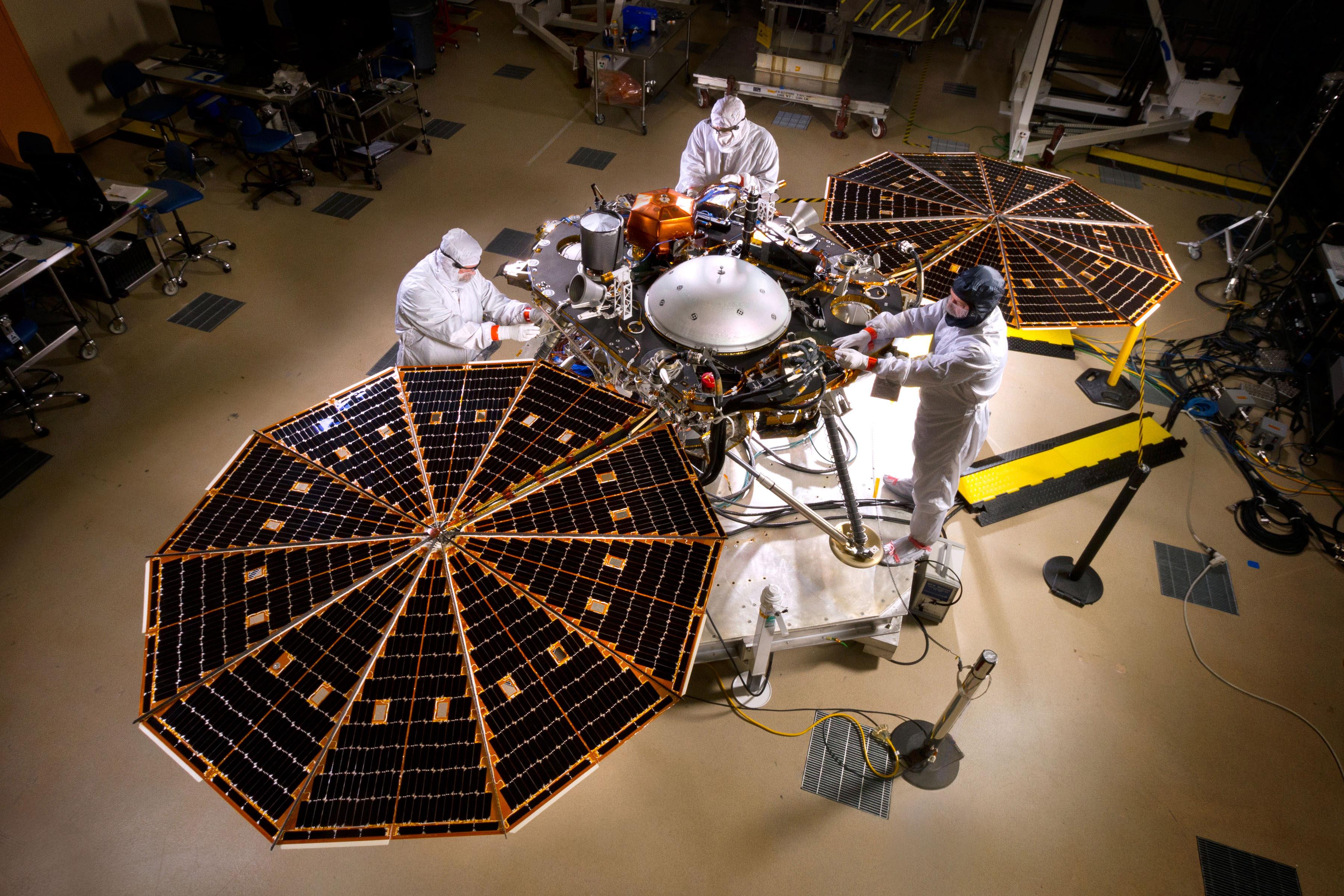
The launch delay and possible cancellation of NASA's next Mars lander shouldn't affect the agency's other activities at the Red Planet going forward, officials say.
On Tuesday (Dec. 22), NASA announced that a leak in the vacuum chamber surrounding a key scientific instrument will prevent the InSight Mars lander from blasting off in March 2016 as planned. The space agency will now work to determine whether to target the next available launch window, which opens in mid-2018, or to cancel InSight altogether.
Whatever happens with InSight, NASA's future Mars activities, both robotic and crewed, should go ahead according to plan, agency officials said. [Photos: NASA's Mars InSight Mission to Probe Red Planet's Core]
"InSight is a stand-alone Discovery mission in a relatively focused science area," John Grunsfeld, associate administrator for NASA's Science Mission Directorate, said during a teleconference Tuesday. (InSight was selected via NASA's Discovery Program, which funds relatively low-cost missions to various solar system destinations. The total cost of InSight's mission is capped at $675 million.)
"While we're really interested in the results, it doesn't affect the sequence of either any of our other scientific missions — say, Mars 2020 — or our collaboration with the European Space Agency on their ExoMars program," Grunsfeld added. "And as far as the longer range, it doesn't add any dependencies for future human exploration."
Mars 2020 is NASA's next Red Planet rover mission, which aims to launch a six-wheeled robot in 2020. Once it touches down, the $1.5 billion 2020 rover will search for signs of past Mars life and collect samples for a potential future return to Earth, among other duties.
ExoMars will also hunt for possible Martian biosignatures, from orbit and the surface. The plan calls for launching an orbiter and technology-demonstrating lander in 2016, then following with a rover in 2018.
Get the Space.com Newsletter
Breaking space news, the latest updates on rocket launches, skywatching events and more!
As far as crewed exploration goes, putting boots on Mars is NASA's top priority over the next few decades. The agency is working to get astronauts to the vicinity of Mars by the end of the 2030s.
The InSight mission — whose name is short for Interior Exploration using Seismic Investigations, Geodesy and Heat Transport— was designed to reveal key details about Mars' internal structure, including the size of the planet's core.
The lander is outfitted with two primary instruments — a suite of three seismometers supplied by the French space agency CNES (which is the one experiencing the vacuum-chamber leak), and a self-burying heat-flow probe provided by the German space agency, known as DLR.
InSight's planned work "is extremely important science," Jim Green, head of NASA's Planetary Science division, said during Tuesday's teleconference. "We know the interior of the Earth very well, but of the other terrestrial planets, Mars is our really only hope to be able to make those kinds of measurements that allow comparative planetology in this particular area, in terms of how planets are put together early on in the solar system."
And while Grunsfeld described InSight as a stand-alone mission, the lander's observations would nonetheless be of interest to future Mars astronauts, Green said.
"How active that particular planet is may be very important from a seismic perspective," he said. The heat probe, Green added, "also can provide information about how the planet is cooling over time, perhaps to be used for human exploration in other ways. So, things that we do at Mars do indeed have important context to human exploration."
Follow Mike Wall on Twitter @michaeldwall and Google+. Follow us @Spacedotcom, Facebook or Google+. Originally published on Space.com.
Join our Space Forums to keep talking space on the latest missions, night sky and more! And if you have a news tip, correction or comment, let us know at: community@space.com.

Michael Wall is a Senior Space Writer with Space.com and joined the team in 2010. He primarily covers exoplanets, spaceflight and military space, but has been known to dabble in the space art beat. His book about the search for alien life, "Out There," was published on Nov. 13, 2018. Before becoming a science writer, Michael worked as a herpetologist and wildlife biologist. He has a Ph.D. in evolutionary biology from the University of Sydney, Australia, a bachelor's degree from the University of Arizona, and a graduate certificate in science writing from the University of California, Santa Cruz. To find out what his latest project is, you can follow Michael on Twitter.









